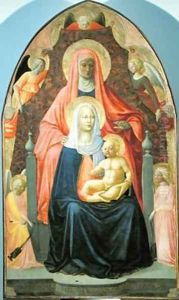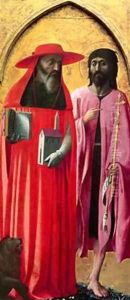T. & Masolino, T. Masaccio Paintings
Tommaso di Giovanni di Simone, known as Masaccio (1401 – 1428), and Tommaso di Cristoforo Fini, known as Masolino (1383 – c. 1447), were two pivotal figures in the early Renaissance painting in Italy. Their collaboration is most famously seen in the Brancacci Chapel in Florence, where their combined efforts mark a significant transition in the history of art from the late Gothic to the early Renaissance style.
Masolino, the elder of the two, was born in 1383. His work is characterized by its graceful figures and soft, detailed landscapes, which were typical of the International Gothic style. Despite his contributions to the development of Italian Renaissance art, Masolino is often overshadowed by his younger contemporary and collaborator, Masaccio. Masolino's travels took him to Hungary and Rome, where he worked on various commissions, but it is his work in the Brancacci Chapel that remains his most celebrated.
Masaccio was born in 1401 in Castel San Giovanni di Altura (now San Giovanni Valdarno). His nickname, a diminutive form of 'Masaccio', meaning 'clumsy Tom', belies the profound impact of his art. Masaccio is credited with introducing perspective, chiaroscuro (the use of strong contrasts between light and dark), and a more naturalistic approach to character portrayal into painting. His work demonstrates a mastery of the human form and a dramatic approach to narrative that had not been seen before. Despite his brief career, cut short by his untimely death in 1428 at the age of 27, Masaccio's innovations laid the groundwork for the development of Renaissance art.
The collaboration between Masolino and Masaccio in the Brancacci Chapel, particularly in the frescoes depicting the life of St. Peter, showcases the contrast between their styles and the transition from the medieval to the Renaissance approach to painting. While Masolino's contributions embody elegance and grace, Masaccio's frescoes are marked by their realism, emotional depth, and use of perspective. The chapel serves as a visual textbook of early Renaissance painting techniques and principles, reflecting the contributions of both artists to the evolution of Western art.
The legacies of Masolino and Masaccio are intertwined, with Masaccio often being seen as the torchbearer of the Renaissance movement that Masolino helped to initiate. Despite their differing styles, their collaborative work in the Brancacci Chapel remains a testament to the transformative power of their art and a pivotal moment in the history of painting.

